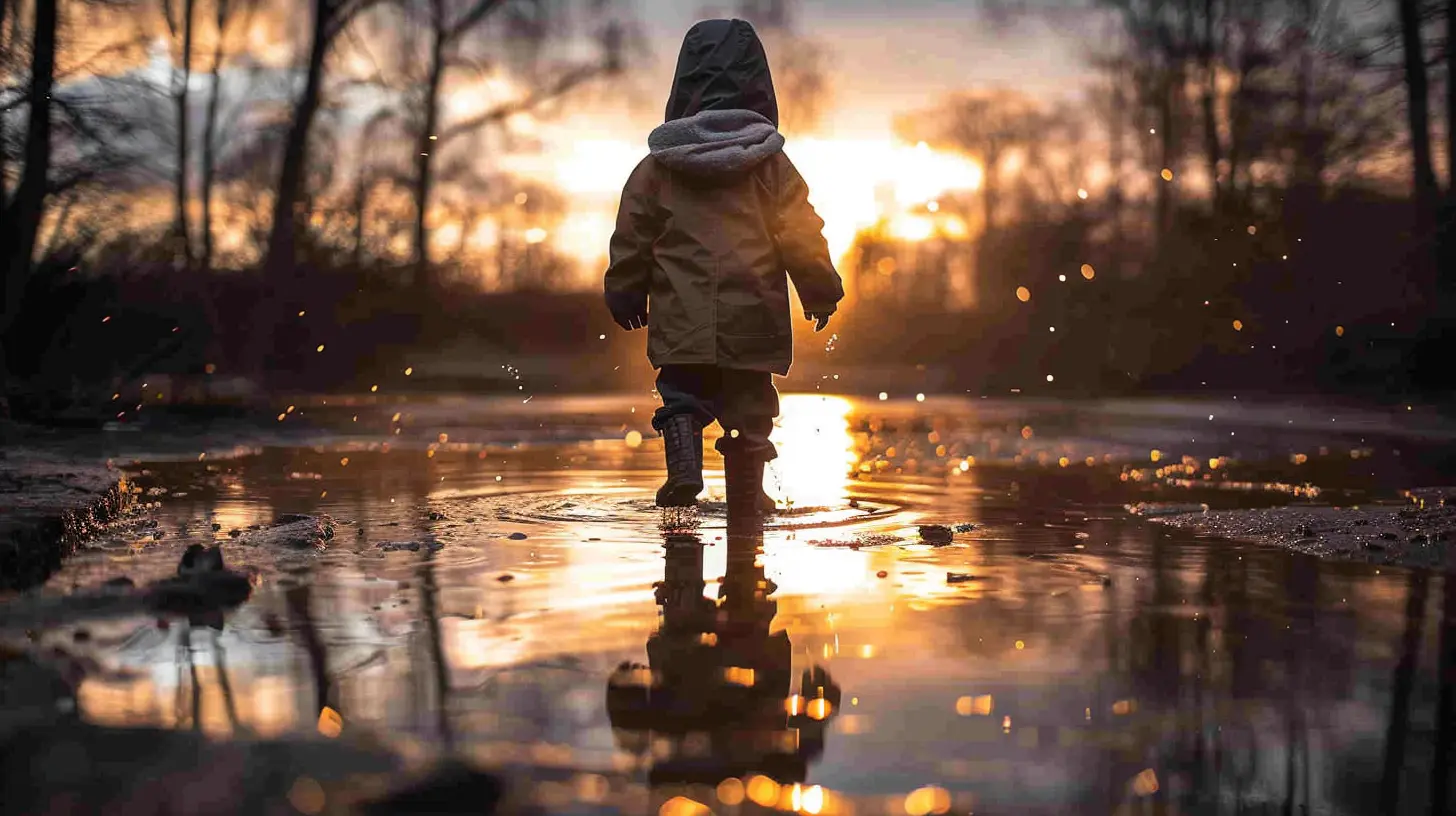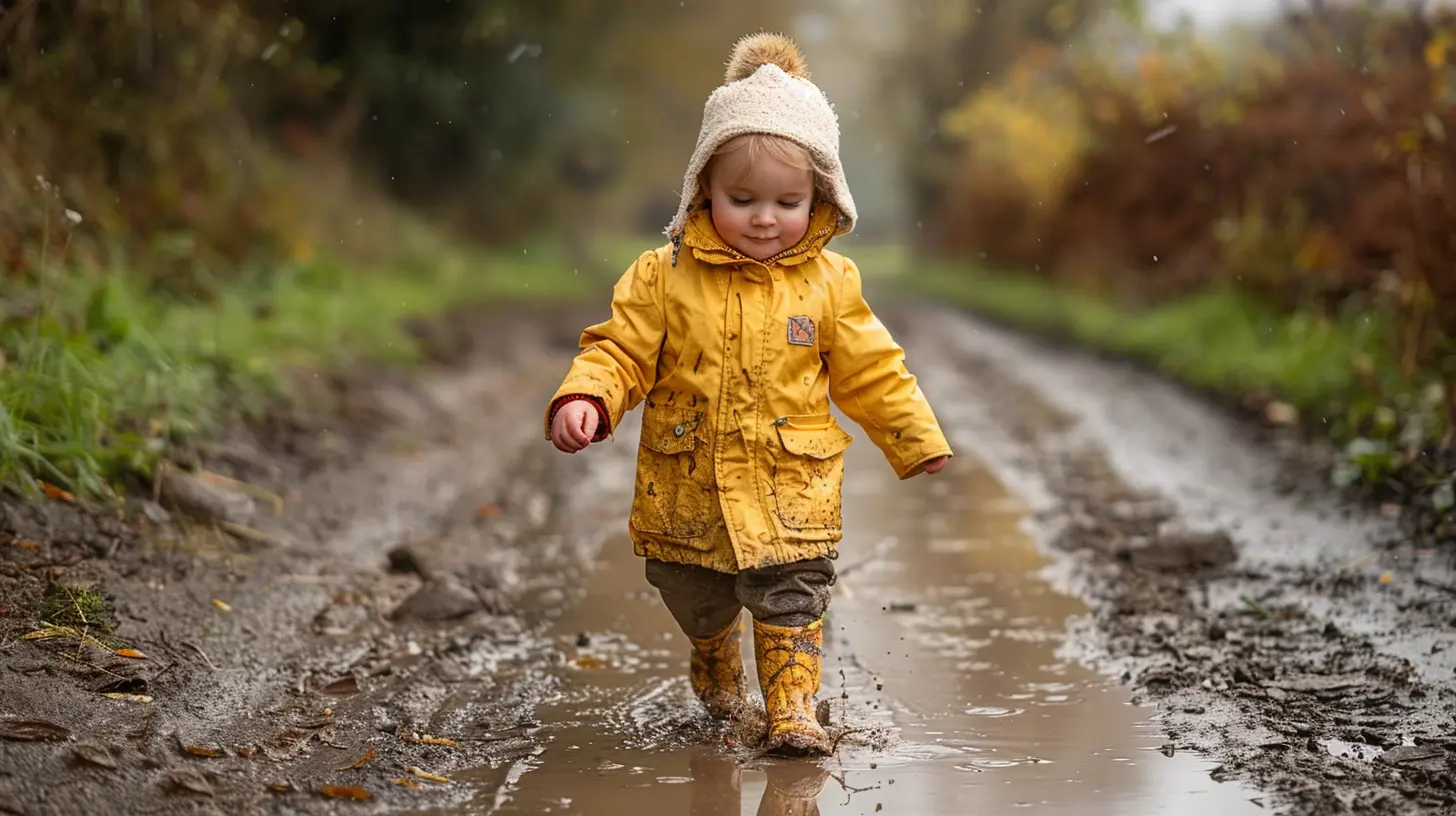Cultivating Resilience and Independence Through Free-Range Parenting
6 June 2025
Ever watched your child attempt to climb a tree, fall halfway, and then try again with utter determination? That, my friend, is a little dose of resilience sprinkled with the spice of independence. But here’s the kicker — are we really letting our kids be kids anymore? In today's world of helicopter parenting and GPS trackers on tricycles, the idea of letting your child roam the neighborhood feels like something out of a vintage sitcom rather than a practical parenting tactic.
But here’s where things get interesting. There’s a growing movement that’s all about stepping back to let our children step up — it’s called free-range parenting, and it's not just about giving your kid a longer leash. It’s about raising confident, thoughtful, and capable little humans who don’t melt like snowflakes at the first sign of trouble.
Let’s dive into the wild (but not so wild!) world of cultivating resilience and independence through free-range parenting.
What Is Free-Range Parenting, Anyway?
Think less “chickens in a field” and more “kids on bikes.”Free-range parenting is all about allowing children to have more freedom, coupled with responsibility, in order to help them develop critical life skills. It’s not the same as being hands-off or negligent — it’s intentional, thoughtful, and yes, slightly nerve-wracking for us control-freak parents.
The idea is simple: kids learn by doing. They discover their limits by testing them. They become independent not by lectures and motivational posters, but by walking to the corner store on their own, figuring out how to settle arguments with friends, and yes — sometimes failing.
Why Building Resilience and Independence Matters
Let’s face it. Life is tough. It’s a rollercoaster of spilled cereal, unexpected quizzes, mean bosses, and heartbreak. If we want our kids to thrive, they need to learn how to cope with all of life’s hiccups and heartbreaks.Here’s what resilience and independence give our kids:
- Problem-solving skills: When a child faces a challenge without someone swooping in, they start learning how to think on their feet.
- Confidence: Nothing boosts your self-esteem like realizing you don’t need mom or dad to fix everything.
- Emotional regulation: Kids learn how to manage frustration, fear, and disappointment when given a safe space to experience them.
In a nutshell? Resilient, independent kids turn into grounded, capable adults who won’t call you from college because they can’t figure out how to do laundry.
The Link Between Free-Range Parenting and Resilience
So how does letting your 10-year-old walk the dog help build resilience?Glad you asked.
Free-range parenting offers regular doses of real-life challenges. These aren’t manufactured, gold-star, Pinterest-perfect learning moments. They’re simple situations like navigating a public park, handling a scraped knee, or negotiating with a stubborn sibling.
Here’s the magic formula:
Freedom ➞ Responsibility ➞ Real-world experience ➞ Growth
Letting kids experience the real world — in age-appropriate, supervised (but not smothered) ways — gives them the chance to mess up and bounce back. That bounce back? That’s resilience taking root.
Modern Parenting: The Overprotection Epidemic
Can we be real for a sec?Modern parenting has become a neurotic blend of hand sanitizer, stranger danger, and “just text me every 15 minutes.” We’re so focused on preventing every possible harm that we’re robbing our children of the chance to learn bravery and self-reliance.
Of course, safety should be a priority — I’m not suggesting we hand our 5-year-olds a compass and send them off into the woods. But there’s a huge difference between protection and overprotection.
Overprotection leads to:
- Anxiety
- Low self-esteem
- Learned helplessness (aka, “Mom will fix it” syndrome)
Free-range parenting is about recalibrating the balance between safety and freedom — and trusting that your kid is more capable than you think.
Simple Ways to Start Free-Range Parenting Today
Alright, let’s get practical. I get it — the idea of free-range parenting might sound a little terrifying at first, especially if you're accustomed to managing every detail in your child’s orbit.Here are some baby steps toward raising mini-independent legends:
1. Let Them Fail (In a Safe Space)
Let your child try solving their own problems — whether it’s a jigsaw puzzle or a fight with a friend. Don’t rush to rescue. Be nearby, but invisible.2. Give Them Responsibility
Start with little jobs: setting the table, feeding the dog, making their own lunch. Chores aren’t punishment — they’re life lessons in disguise.3. Encourage Solo Play and Boredom
Unstructured time is magic. When kids are left to their own devices (preferably not actual devices), they get creative. They build blanket forts. They invent new rules for tag. They become independent thinkers.4. Let Them Go Places — Alone
Depending on age and maturity, this can be as simple as walking to a neighbor’s house or going to the local playground. Start small and expand.5. Teach Street Smarts and Common Sense
Before unleashing your child into the wild (aka the corner store), teach them how to handle basic situations. What to do if they get lost? How to cross a busy street? Who is safe to ask for help?Remember: Preparation is key. It’s not about blind freedom — it’s calculated trust.
Age-Appropriate Milestones for Independence
Here's a quick cheat sheet on what types of independence you can reasonably encourage at different ages — understanding, of course, that every child is different.| Age | Skills To Encourage |
|-----|---------------------|
| 3–5 | Dressing themselves, cleaning up toys, choosing their outfit |
| 6–8 | Walking short distances, helping with tasks like cooking or laundry |
| 9–12 | Biking to a friend’s house, staying home for short periods |
| 13+ | Managing homework, budgeting allowance, solo outings with friends |
Use your parental gut (yes, it’s a thing) to gauge readiness — but don’t underestimate your child’s abilities either.
Overcoming the Fear: But What If Something Goes Wrong?
Ah yes, the million-dollar question: “But what if something bad happens?”Listen, that fear is completely valid. The world can be scary — but most of the time, it’s not as dangerous as news headlines make it seem.
Here’s a wild truth bomb: statistically, children today are safer than they were 30 years ago. Yet, parental fear has tripled.
So how do we quiet the fear monster?
- Start small: You’re not sending your child to Mars. Let them take micro-risks that stretch their confidence without sending your anxiety into orbit.
- Connect with other parents: Build a supportive community around free-range parenting. Trust me, it helps knowing other parents are also letting their kids walk to school.
- Zone in on communication: Equip your child with the tools to reach you if something goes wrong—cell phones, code words, and check-ins are your friends.
What Resilience Looks Like in Real Life
Want a peek at what a resilient kid looks like?Picture this: Your daughter’s lemonade stand got rained out. Instead of sulking, she moves it to the garage and starts offering “Rainy Day Specials.” Or your son forgets his homework, and instead of calling you in a panic, he talks to the teacher and takes accountability.
These moments, though small, are giant victories in the world of resilience and independence. These are the kind of kids who grow into adults that don’t unravel when the coffee shop's Wi-Fi is down.
Real Talk: The Beauty (and Chaos) of Letting Go
Free-range parenting isn’t about being lazy or “just letting them figure it out” while you scroll Instagram. It’s about showing deliberate trust in their abilities and letting them navigate bumps with your guidance — not your interference.Yes, there will be scrapes and stumbles. Yes, you’ll fight the urge to shout, “BE CAREFUL!” every five seconds. But oh man, the pride you’ll feel when your child solves a problem, owns a mistake, or just enjoys being without constant oversight? That’s parenting gold.
You’re not raising a robot. You’re raising a human — messy, wildly curious, and capable of more than you know.
In a Nutshell: Set Them Free, Watch Them Fly
Free-range parenting is a powerful way to help your children grow resilient and independent, not because we protect them from every storm, but because we trust they can learn to dance in the rain. Yes, you'll worry. Yes, it requires trust. But the payoff? Watching your kids blossom into confident, capable, kind-hearted humans.And isn’t that what this whole parenting gig is really about?
all images in this post were generated using AI tools
Category:
Parenting StylesAuthor:

Zelda Gill
Discussion
rate this article
2 comments
Greyson McGlynn
Encouraging independence fosters resilience in children.
June 13, 2025 at 4:07 PM

Zelda Gill
Thank you for your insight! Encouraging independence is indeed a key factor in building resilience in children, as it empowers them to face challenges confidently.
Raine Lawson
Free-range parenting: letting kids roam while we sip coffee!
June 8, 2025 at 4:12 PM

Zelda Gill
Absolutely! Free-range parenting encourages independence and resilience by allowing kids the freedom to explore, while parents can enjoy moments of relaxation, leading to a balanced approach to parenting.


